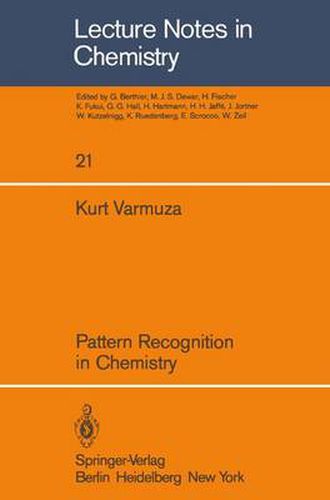Readings Newsletter
Become a Readings Member to make your shopping experience even easier.
Sign in or sign up for free!
You’re not far away from qualifying for FREE standard shipping within Australia
You’ve qualified for FREE standard shipping within Australia
The cart is loading…






This title is printed to order. This book may have been self-published. If so, we cannot guarantee the quality of the content. In the main most books will have gone through the editing process however some may not. We therefore suggest that you be aware of this before ordering this book. If in doubt check either the author or publisher’s details as we are unable to accept any returns unless they are faulty. Please contact us if you have any questions.
Analytical chemistry of the recent years is strongly influenced by automation. Data acquisition from analytica~ instruments - and some times also controlling of instruments - by a computer are principally solved since many years. Availability of microcomputers made these tasks also feasible from the economic point of view. Besides these basic applications of computers in chemical measurements scientists developed computer programs for solving more sophisticated problems for which some kind of intelligence is usually supposed to be necessary. Harm less numerical experiments on this topic led to passionate discussions about the theme which jobs cannot be done by a computer but only by human brain ?~. If this question is useful at all it should not be ans wered a priori. Application of computers in chemistry is a matter of utility, sometimes it is a social problem, but it is never a question of piety for the human brain. Automated instruments and the necessity to work on complex pro blems enhanced the development of automatic methods for the reduction and interpretation of large data sets. Numerous methods from mathematics, statistics, information theory, and computer science have been exten sively investigated for the elucidation of chemical information; a new discipline chemometrics has been established. Three different approaches have been used for computer-assisted interpretations of chemical data. 1. Heuristic methods try to formu late computer programs working in a similar way as a chemist would solve the problem. 2.
$9.00 standard shipping within Australia
FREE standard shipping within Australia for orders over $100.00
Express & International shipping calculated at checkout
This title is printed to order. This book may have been self-published. If so, we cannot guarantee the quality of the content. In the main most books will have gone through the editing process however some may not. We therefore suggest that you be aware of this before ordering this book. If in doubt check either the author or publisher’s details as we are unable to accept any returns unless they are faulty. Please contact us if you have any questions.
Analytical chemistry of the recent years is strongly influenced by automation. Data acquisition from analytica~ instruments - and some times also controlling of instruments - by a computer are principally solved since many years. Availability of microcomputers made these tasks also feasible from the economic point of view. Besides these basic applications of computers in chemical measurements scientists developed computer programs for solving more sophisticated problems for which some kind of intelligence is usually supposed to be necessary. Harm less numerical experiments on this topic led to passionate discussions about the theme which jobs cannot be done by a computer but only by human brain ?~. If this question is useful at all it should not be ans wered a priori. Application of computers in chemistry is a matter of utility, sometimes it is a social problem, but it is never a question of piety for the human brain. Automated instruments and the necessity to work on complex pro blems enhanced the development of automatic methods for the reduction and interpretation of large data sets. Numerous methods from mathematics, statistics, information theory, and computer science have been exten sively investigated for the elucidation of chemical information; a new discipline chemometrics has been established. Three different approaches have been used for computer-assisted interpretations of chemical data. 1. Heuristic methods try to formu late computer programs working in a similar way as a chemist would solve the problem. 2.